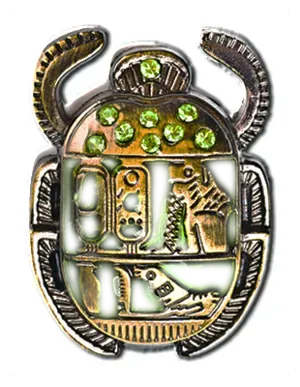 Peridot is named after the French word peritot, meaning gold, because the mineral can vary towards this color. Peridot is the birthstone for the month of August. It is also the stone given to celebrate the 16th year of marriage. Peridot has a very long written history. Ancient papyri record the mining of these stones as early as 1500 BC. The main source of peridot in the ancient world was Topazo Island (now Zabargad or St. John's Island) in the Egyptian Red Sea. In Ancient times, peridot stones were used for carved talismans. Island habitants were forced to collect the gems for the Pharaoh's treasury. Legend says that jealous watchers who had orders to put to death any trespassers guarded the entire island. The story continues that the miners worked in the daytime as well as night, as the gems could be found after nightfall due to their radiance. The miners would mark the spot at night for retrieval the following day.
Peridot is named after the French word peritot, meaning gold, because the mineral can vary towards this color. Peridot is the birthstone for the month of August. It is also the stone given to celebrate the 16th year of marriage. Peridot has a very long written history. Ancient papyri record the mining of these stones as early as 1500 BC. The main source of peridot in the ancient world was Topazo Island (now Zabargad or St. John's Island) in the Egyptian Red Sea. In Ancient times, peridot stones were used for carved talismans. Island habitants were forced to collect the gems for the Pharaoh's treasury. Legend says that jealous watchers who had orders to put to death any trespassers guarded the entire island. The story continues that the miners worked in the daytime as well as night, as the gems could be found after nightfall due to their radiance. The miners would mark the spot at night for retrieval the following day.
 Peridot is the National gem of Egypt. Ancient Egyptians knew it as "the gem of the sun."" Peridot was mined for over 3,500 years on St Johns Island. As late as the 19th Century, the Kedhive of Egypt had a monopoly on the mines. At one point, the island's exact whereabouts became a mystery for several centuries until being rediscovered in 1905. Joel Aram, from the ""Color Encyclopedia of Gemstones 2nd Edition,"" writes ""Zabargad is an island in the Red Sea that is often shrouded in fog, making it difficult for ancient navigators to find. The location has been lost in fact, for centuries, and was rediscovered in about 1905. The island is located 35 miles of the Egyptian coastal port of Berenica."" In the 19th Century, the mines on Zabargad Island produced millions of dollars worth of peridot. After 1905, production of the gems peaked, but by the late 1930's it tapered off to practically nothing and reached a virtual stand still in 1958, when the mines were nationalized. Although parcels of St. Johns peridot still come into the market once in a while, it is not known whether it is new or old. Most assume it is old."
Peridot is the National gem of Egypt. Ancient Egyptians knew it as "the gem of the sun."" Peridot was mined for over 3,500 years on St Johns Island. As late as the 19th Century, the Kedhive of Egypt had a monopoly on the mines. At one point, the island's exact whereabouts became a mystery for several centuries until being rediscovered in 1905. Joel Aram, from the ""Color Encyclopedia of Gemstones 2nd Edition,"" writes ""Zabargad is an island in the Red Sea that is often shrouded in fog, making it difficult for ancient navigators to find. The location has been lost in fact, for centuries, and was rediscovered in about 1905. The island is located 35 miles of the Egyptian coastal port of Berenica."" In the 19th Century, the mines on Zabargad Island produced millions of dollars worth of peridot. After 1905, production of the gems peaked, but by the late 1930's it tapered off to practically nothing and reached a virtual stand still in 1958, when the mines were nationalized. Although parcels of St. Johns peridot still come into the market once in a while, it is not known whether it is new or old. Most assume it is old."
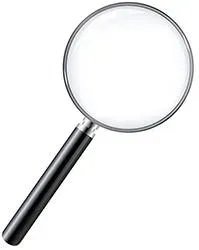 Peridot was known in old times as chrysolite. The name chysolite however, was used at a time when we did not have the ability to so accurately identify stones as we do today. The word "chrysolite"" was also used for some colors of
Peridot was known in old times as chrysolite. The name chysolite however, was used at a time when we did not have the ability to so accurately identify stones as we do today. The word "chrysolite"" was also used for some colors of ![]() topaz until we began to be able to recognize the differences between these stones."
topaz until we began to be able to recognize the differences between these stones."
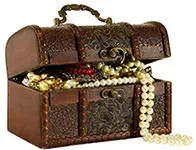 Once upon a time, ecclesiastical treasures in European cathedrals included some fine, large peridots, but wars and pillage have dispersed many of them. The ones that disappeared probably do exist today but have been cut down to smaller size and set in jewelry.
Once upon a time, ecclesiastical treasures in European cathedrals included some fine, large peridots, but wars and pillage have dispersed many of them. The ones that disappeared probably do exist today but have been cut down to smaller size and set in jewelry.
 In the middle ages, Europeans brought peridot stones back from the Crusades to decorate church plates and robes. Peridot was also known to ancient Hebrews and is listed both as one of the stones used by Aaron and found in the text of the apocalypse (Revelations).
In the middle ages, Europeans brought peridot stones back from the Crusades to decorate church plates and robes. Peridot was also known to ancient Hebrews and is listed both as one of the stones used by Aaron and found in the text of the apocalypse (Revelations).
 Before a coup d'etat in 1962, that left the country a socialist totalitarian state controlled by its army, Burma was a thriving peridot producer, principally in its North Central Mogok district. Now, Burma is in economic shambles, completely poor and depressed. The only Burmese peridot available now is decent, but far from great, yet the price is a hundred times that of Burma's best before the country was shut off from the world. Politics are the reason Burma can no longer be counted on for peridot. Burma still produces some gems, but mining is clandestine and most goods are passed onto the outside world through a rather elaborate network of smugglers. Thailand is actually a cheap conduit for Burmese contraband.
Before a coup d'etat in 1962, that left the country a socialist totalitarian state controlled by its army, Burma was a thriving peridot producer, principally in its North Central Mogok district. Now, Burma is in economic shambles, completely poor and depressed. The only Burmese peridot available now is decent, but far from great, yet the price is a hundred times that of Burma's best before the country was shut off from the world. Politics are the reason Burma can no longer be counted on for peridot. Burma still produces some gems, but mining is clandestine and most goods are passed onto the outside world through a rather elaborate network of smugglers. Thailand is actually a cheap conduit for Burmese contraband.
 One famous large peridot gem adorning the shrine of the Three Holy Kings in the cathedral at Cologne was for centuries, believed to be an
One famous large peridot gem adorning the shrine of the Three Holy Kings in the cathedral at Cologne was for centuries, believed to be an ![]() emerald, and only identified as peridot late in the last century. A few jewelry historians are now convinced that some, or possibly all of the emeralds Cleopatra was famous for wearing, were not actually emeralds, but Peridots from Egypt. This emerald-looking shade of green is almost never encountered in peridots under ten carats. To find stones of such color, one must look in Egypt and Burma, where production has reached a virtual standstill in recent years.
emerald, and only identified as peridot late in the last century. A few jewelry historians are now convinced that some, or possibly all of the emeralds Cleopatra was famous for wearing, were not actually emeralds, but Peridots from Egypt. This emerald-looking shade of green is almost never encountered in peridots under ten carats. To find stones of such color, one must look in Egypt and Burma, where production has reached a virtual standstill in recent years.
 Peridot has long been called "an Evening Emerald,"" for under artificial light, the stone glows a brilliant green. Peridot is similar to the
Peridot has long been called "an Evening Emerald,"" for under artificial light, the stone glows a brilliant green. Peridot is similar to the ![]() emerald but softer in intensity. Peridots of two or three carats are expensive, and a fine eight-carat stone is extremely rare. Any stones beyond eight carats are collectors or museum pieces. Two of the finest peridot displays containing some of the largest and best specimens are in the American Museum of Natural History in New York City and the Field Museum in Chicago. The Smithsonian Institution in Washington DC has a cut peridot stone of 310 carats."
emerald but softer in intensity. Peridots of two or three carats are expensive, and a fine eight-carat stone is extremely rare. Any stones beyond eight carats are collectors or museum pieces. Two of the finest peridot displays containing some of the largest and best specimens are in the American Museum of Natural History in New York City and the Field Museum in Chicago. The Smithsonian Institution in Washington DC has a cut peridot stone of 310 carats."
 Throughout history, there have been many legends that state the strong magical power that peridot possesses. Legend says that if the gem is set in gold, it will develop its full potential as a talisman and will have the power to dispel terrors of the night- fears and bad dreams. However, according to Pliny The Elder, the Great Roman authority on such matters, for peridots to work their strongest magic, they must be worn on the right arm.
Throughout history, there have been many legends that state the strong magical power that peridot possesses. Legend says that if the gem is set in gold, it will develop its full potential as a talisman and will have the power to dispel terrors of the night- fears and bad dreams. However, according to Pliny The Elder, the Great Roman authority on such matters, for peridots to work their strongest magic, they must be worn on the right arm.
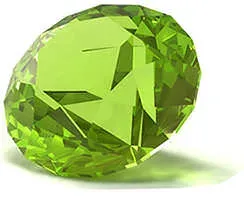 Several experts believe that the second gemstone in Aaron's breastplate was a peridot. There is also an argument that has never been settled as to which gem was used as the seventh foundation stone for the New Jerusalem of the Bible. Some authorities maintain that this too was peridot. Another note about the power of the gem is contained in a statement made by the Bishop of Mainz about 1,100 years ago to the effect that "ï¾…in the peridot is shown true spiritual preaching accompanied by miracles."""
Several experts believe that the second gemstone in Aaron's breastplate was a peridot. There is also an argument that has never been settled as to which gem was used as the seventh foundation stone for the New Jerusalem of the Bible. Some authorities maintain that this too was peridot. Another note about the power of the gem is contained in a statement made by the Bishop of Mainz about 1,100 years ago to the effect that "ï¾…in the peridot is shown true spiritual preaching accompanied by miracles."""
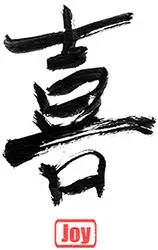 Peridot has been long considered to be an aid to friendship and supposedly frees the mind of envious thoughts. It is also supposed to protect the wearer from the evil eye. Other legends credit peridot with bringing happiness and good cheer, attracting lovers, and strengthening the eyes. Pliny wrote that peridot is dull during daylight hours but will glow like a hot coal by night.
Peridot has been long considered to be an aid to friendship and supposedly frees the mind of envious thoughts. It is also supposed to protect the wearer from the evil eye. Other legends credit peridot with bringing happiness and good cheer, attracting lovers, and strengthening the eyes. Pliny wrote that peridot is dull during daylight hours but will glow like a hot coal by night.
 Several sources say that in ancient times, cups or other vessels made of peridot were used in healing because medicinal liquids drunk from them were more effective. In 1502 in Venice, Kunz cited the manuscript which relates the ancient practice of using a piece of peridot upon which was carved an ass to assist a person with a skill or prophesy. On the other hand, the engraving of a totem or a vulture allowed the stone to have control over various demonic spirits as well as the winds.
Several sources say that in ancient times, cups or other vessels made of peridot were used in healing because medicinal liquids drunk from them were more effective. In 1502 in Venice, Kunz cited the manuscript which relates the ancient practice of using a piece of peridot upon which was carved an ass to assist a person with a skill or prophesy. On the other hand, the engraving of a totem or a vulture allowed the stone to have control over various demonic spirits as well as the winds.
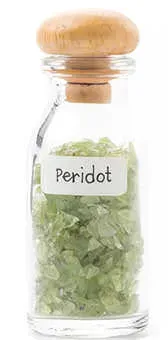 As with other gemstones, the color of the peridot stone is directly related to parts of the body that it can be of aid to. Because of it's yellowish green color, peridot has been believed to cure diseases of the liver and difficulties with digestion. It aids in physical detoxification and helps problems with the kidneys, bladder, gall bladder, and the stomach. Peridot heals such illnesses as ulcers, constipation, and irritable bowel syndrome. It is also useful in helping to heal insect bites. Peridot has a tonic effect- it heals and regenerates tissues, strengthens the metabolism and benefits the skin. It aids the heart, thymus, lungs, and spleen. If placed on the abdomen, it aids in giving birth by strengthening the muscle contractions while lessening the pain. Peridot is also helpful in treating skin diseases and difficulties associated with the adrenal glands and endocrine systems. It is also used to treat fevers.
As with other gemstones, the color of the peridot stone is directly related to parts of the body that it can be of aid to. Because of it's yellowish green color, peridot has been believed to cure diseases of the liver and difficulties with digestion. It aids in physical detoxification and helps problems with the kidneys, bladder, gall bladder, and the stomach. Peridot heals such illnesses as ulcers, constipation, and irritable bowel syndrome. It is also useful in helping to heal insect bites. Peridot has a tonic effect- it heals and regenerates tissues, strengthens the metabolism and benefits the skin. It aids the heart, thymus, lungs, and spleen. If placed on the abdomen, it aids in giving birth by strengthening the muscle contractions while lessening the pain. Peridot is also helpful in treating skin diseases and difficulties associated with the adrenal glands and endocrine systems. It is also used to treat fevers.
 Peridot is also very beneficial when it comes to treating psychological afflictions as well. It is a wonderful stone to help someone who is going through depression. It is a stone of lightness that counters the effects of negative emotions. It has the ability to balance the process of emotional release and detoxifies negative emotions, bringing them to comfortable levels. Peridot fosters emotional balance, security, and inner peace. It soothes nervousness, heals emotional and physical pain, and lightens suffering. Such usages date back to ancient Roman times when rings of peridot were worn to relieve depression. Because it is calming to the nervous system, peridot is also useful in promoting sleep. Peridot banishes lethargy, which can attack someone who is experiencing depression. The stone's energy balances bipolar disorders and other forms of depression and helps one's self esteem or bruised ego. It also brings about necessary change, which is much needed to someone who is depressed.
Peridot is also very beneficial when it comes to treating psychological afflictions as well. It is a wonderful stone to help someone who is going through depression. It is a stone of lightness that counters the effects of negative emotions. It has the ability to balance the process of emotional release and detoxifies negative emotions, bringing them to comfortable levels. Peridot fosters emotional balance, security, and inner peace. It soothes nervousness, heals emotional and physical pain, and lightens suffering. Such usages date back to ancient Roman times when rings of peridot were worn to relieve depression. Because it is calming to the nervous system, peridot is also useful in promoting sleep. Peridot banishes lethargy, which can attack someone who is experiencing depression. The stone's energy balances bipolar disorders and other forms of depression and helps one's self esteem or bruised ego. It also brings about necessary change, which is much needed to someone who is depressed.
 Peridot opens, cleanses and activates the heart, which can help one to release old baggage. All burdens, guilt and obsessions become cleared and a new psychological clarity and feeling of well-being begin. Peridot teaches that holding onto the past is counter productive. It shows you how to detach yourself from outside influences and how to look to your own higher energies for guidance. It assists in moving forward rapidly in therapeutic situations. It also helps you understand your destiny and spiritual purpose, helping you attain your full potential. All in all, the stone sharpens the mind and opens it to new levels of awareness.
Peridot opens, cleanses and activates the heart, which can help one to release old baggage. All burdens, guilt and obsessions become cleared and a new psychological clarity and feeling of well-being begin. Peridot teaches that holding onto the past is counter productive. It shows you how to detach yourself from outside influences and how to look to your own higher energies for guidance. It assists in moving forward rapidly in therapeutic situations. It also helps you understand your destiny and spiritual purpose, helping you attain your full potential. All in all, the stone sharpens the mind and opens it to new levels of awareness.
 Anger is an emotion peridot has been known to be very beneficial for. The stone calms the nervous system, helping to dissolve emotional tensions and bringing balance to the system. It actually attracts love and calms raging anger from within. It alleviates jealousy, resentment, and spite, and reduces stress.
Anger is an emotion peridot has been known to be very beneficial for. The stone calms the nervous system, helping to dissolve emotional tensions and bringing balance to the system. It actually attracts love and calms raging anger from within. It alleviates jealousy, resentment, and spite, and reduces stress.
 The peridot stone can be extremely beneficial to those who are having self-esteem problems. The stone enhances confidence and assertion without aggression. It helps a person see their own light and recognize that they are deserving of love. It assists in looking back to the past at negative experiences, and shows a person how to forgive himself. Peridot helps deal with guilt, whether it is self-imposed, or the product of others manipulative ways. It can help you to admit your mistakes and move on, taking responsibility for your own life, especially when you believe it is all someone else's fault. It also helps those who feel they have little personal power as working with the stone or keeping one with you will give you that extra boost you might need. It is stimulating to one's energy level, promoting vitality both physiologically and psychologically. It is invigorating and rejuvenating, promoting access to ones inner vision and joy.
The peridot stone can be extremely beneficial to those who are having self-esteem problems. The stone enhances confidence and assertion without aggression. It helps a person see their own light and recognize that they are deserving of love. It assists in looking back to the past at negative experiences, and shows a person how to forgive himself. Peridot helps deal with guilt, whether it is self-imposed, or the product of others manipulative ways. It can help you to admit your mistakes and move on, taking responsibility for your own life, especially when you believe it is all someone else's fault. It also helps those who feel they have little personal power as working with the stone or keeping one with you will give you that extra boost you might need. It is stimulating to one's energy level, promoting vitality both physiologically and psychologically. It is invigorating and rejuvenating, promoting access to ones inner vision and joy.
 Peridot also has other psychological effects and uses. It can help one overcome hypochondria. It can greatly improve difficult relationships. It treats phobias, particularly those associated with fears of the dark, becoming like a security blanket to a small child. Peridot represents wealth and financial success (think of its green hue) and also attracts romance.
Peridot also has other psychological effects and uses. It can help one overcome hypochondria. It can greatly improve difficult relationships. It treats phobias, particularly those associated with fears of the dark, becoming like a security blanket to a small child. Peridot represents wealth and financial success (think of its green hue) and also attracts romance.
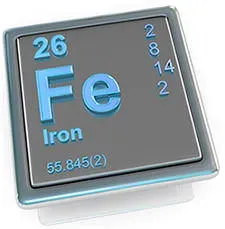 Peridots are transparent with a distinct oily luster. Peridot's color can be described as yellow-green, green with a golden tone, olive or bottle green, deep chartreuse, or simply a brilliant light green. The proportion of iron present causes the shade and depth of the green of a peridot stone; the deeper the green, the smaller the amount of iron present. Peridot is one of a few gems that are not routinely treated. While it is not particularly brilliant (peridots have moderate to high brilliance), the richness of its color can be exceptional and is completely natural. Because of its rarity, peridot is not usually seen in its deeper pure green colors however newly discovered sources may change this. New sources include Arizona, Mexico, Oregon, Norway, Pakistan, Russia and Sri Lanka.
Peridots are transparent with a distinct oily luster. Peridot's color can be described as yellow-green, green with a golden tone, olive or bottle green, deep chartreuse, or simply a brilliant light green. The proportion of iron present causes the shade and depth of the green of a peridot stone; the deeper the green, the smaller the amount of iron present. Peridot is one of a few gems that are not routinely treated. While it is not particularly brilliant (peridots have moderate to high brilliance), the richness of its color can be exceptional and is completely natural. Because of its rarity, peridot is not usually seen in its deeper pure green colors however newly discovered sources may change this. New sources include Arizona, Mexico, Oregon, Norway, Pakistan, Russia and Sri Lanka.
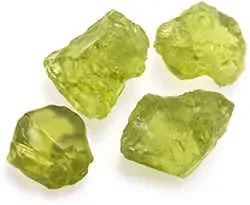 As with all fine gem crystals, small crystals are relatively common and larger stones seldom occur free of flaws. The larger the crystals are, the easier they flaw, from such seismic disturbances as earthquakes and volcanic eruptions. The ways in which the stones are cut and faceted are designed to eliminate these imperfections. It is not uncommon for a 20-carat stone in the rough to only yield three or four gems of only one-half to three carats each. Because large stones have become so rare, the green for which this gem has for centuries been praised, is seldom seen these days. This saturate green was so highly prized, that one of antiquities favorite compliments to peridot, was to mistake it for
As with all fine gem crystals, small crystals are relatively common and larger stones seldom occur free of flaws. The larger the crystals are, the easier they flaw, from such seismic disturbances as earthquakes and volcanic eruptions. The ways in which the stones are cut and faceted are designed to eliminate these imperfections. It is not uncommon for a 20-carat stone in the rough to only yield three or four gems of only one-half to three carats each. Because large stones have become so rare, the green for which this gem has for centuries been praised, is seldom seen these days. This saturate green was so highly prized, that one of antiquities favorite compliments to peridot, was to mistake it for ![]() emerald.
emerald.
 Peridot was formed early in the solidification of the Earth. As the earth's magma slowly cooled to form igneous rock, peridot was born. Parts of the magma which cooled particularly slowly created large and clear specimens of peridot. These rich deposits are located in Egypt, and in Burma as well as surrounding areas.
Peridot was formed early in the solidification of the Earth. As the earth's magma slowly cooled to form igneous rock, peridot was born. Parts of the magma which cooled particularly slowly created large and clear specimens of peridot. These rich deposits are located in Egypt, and in Burma as well as surrounding areas.
 Peridot has been part of the lava and magma spewed forth from volcanic eruptions. In Hawaii, the black basalt rock and beaches are studded with millions of tiny peridot grains. Although most of the peridot on Hawaii is either too small to use, or is locked up in very hard rock and cannot be mined, some pieces of Hawaiian peridot have led to jewelry quality stones.
Peridot has been part of the lava and magma spewed forth from volcanic eruptions. In Hawaii, the black basalt rock and beaches are studded with millions of tiny peridot grains. Although most of the peridot on Hawaii is either too small to use, or is locked up in very hard rock and cannot be mined, some pieces of Hawaiian peridot have led to jewelry quality stones.
 Peridot is also an important component of kimberlite, which is the mineral matrix in which diamonds are found. Kimberlite deposits are rich in microscopic grains of peridot. In South Africa, the ground around several
Peridot is also an important component of kimberlite, which is the mineral matrix in which diamonds are found. Kimberlite deposits are rich in microscopic grains of peridot. In South Africa, the ground around several ![]() diamond mines is blue-green in color due to the saturation of tiny peridots.
diamond mines is blue-green in color due to the saturation of tiny peridots.
 Peridot is not only born of fire here on earth, but it has also arrived to Earth from outer space. Although many different gems can be found in meteorites that have fallen to earth, peridot is the only one that is found in large enough sized to make jewelry from. In 1749, a meteorite landed in a desolate area of Siberia. It was found to contain many pieces of peridot crystals large enough to be set into peridot jewelry.
Peridot is not only born of fire here on earth, but it has also arrived to Earth from outer space. Although many different gems can be found in meteorites that have fallen to earth, peridot is the only one that is found in large enough sized to make jewelry from. In 1749, a meteorite landed in a desolate area of Siberia. It was found to contain many pieces of peridot crystals large enough to be set into peridot jewelry.
 Most of the peridot mined today comes from China, Pakistan, and Arizona and the gems that are found are mostly under 3 carats. Two of the finest peridot collections in the world can be found at the Field Museum in Chicago, and the Museum of Natural History in New York.
Most of the peridot mined today comes from China, Pakistan, and Arizona and the gems that are found are mostly under 3 carats. Two of the finest peridot collections in the world can be found at the Field Museum in Chicago, and the Museum of Natural History in New York.
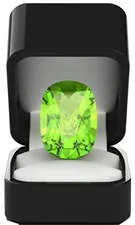 Peridot is a relatively soft stone, rating a 6.5 to 7 on the hardness scale, making it a little softer than
Peridot is a relatively soft stone, rating a 6.5 to 7 on the hardness scale, making it a little softer than ![]() amethyst or
amethyst or ![]() emerald. Peridot should be spared rugged wearing if mounted in rings. The stone is also highly sensitive to rapid temperature changes. Peridots can also lose their polish if they come in contact with commonly used hydrochloric of sulfuric acid.
emerald. Peridot should be spared rugged wearing if mounted in rings. The stone is also highly sensitive to rapid temperature changes. Peridots can also lose their polish if they come in contact with commonly used hydrochloric of sulfuric acid.
 Peridot occurs in a limited number of locations. It occurs in silica-poor igneous rocks, such as basalts, gabbro, troctolite, and peridotite. Some peridot is found in volcanic bombs, while some are found embedded in meteorites. These stones are not usually of gem quality but a few have been faceted and mounted in jewelry settings. As with many precious gems, peridot also occurs in small, worn-down, pebble-sized specimens, weathered by tens of thousands of years of erosion in gem stone gravels. Peridot can be found in the Canary Islands, China, Brazil, Norway, Hawaii, Australia, Pakistan and South Africa. Burma produces some good peridots, however these tend to be a darker shade of green. Brazil, as well as Arizona and New Mexico, also provide some fine, though usually small gemstones.
Peridot occurs in a limited number of locations. It occurs in silica-poor igneous rocks, such as basalts, gabbro, troctolite, and peridotite. Some peridot is found in volcanic bombs, while some are found embedded in meteorites. These stones are not usually of gem quality but a few have been faceted and mounted in jewelry settings. As with many precious gems, peridot also occurs in small, worn-down, pebble-sized specimens, weathered by tens of thousands of years of erosion in gem stone gravels. Peridot can be found in the Canary Islands, China, Brazil, Norway, Hawaii, Australia, Pakistan and South Africa. Burma produces some good peridots, however these tend to be a darker shade of green. Brazil, as well as Arizona and New Mexico, also provide some fine, though usually small gemstones.
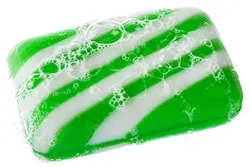 The best and safest way for you to clean your peridot, is with warm, soapy water. You should take special care of your peridot to ensure that it does not come in contact with drastic temperature changes, which can damage the stone. You should also protect your stone from scratches and sharp blows and avoid any contact with chemicals. Peridots should not be cleaned in ultrasonic or steam cleaners.
The best and safest way for you to clean your peridot, is with warm, soapy water. You should take special care of your peridot to ensure that it does not come in contact with drastic temperature changes, which can damage the stone. You should also protect your stone from scratches and sharp blows and avoid any contact with chemicals. Peridots should not be cleaned in ultrasonic or steam cleaners.